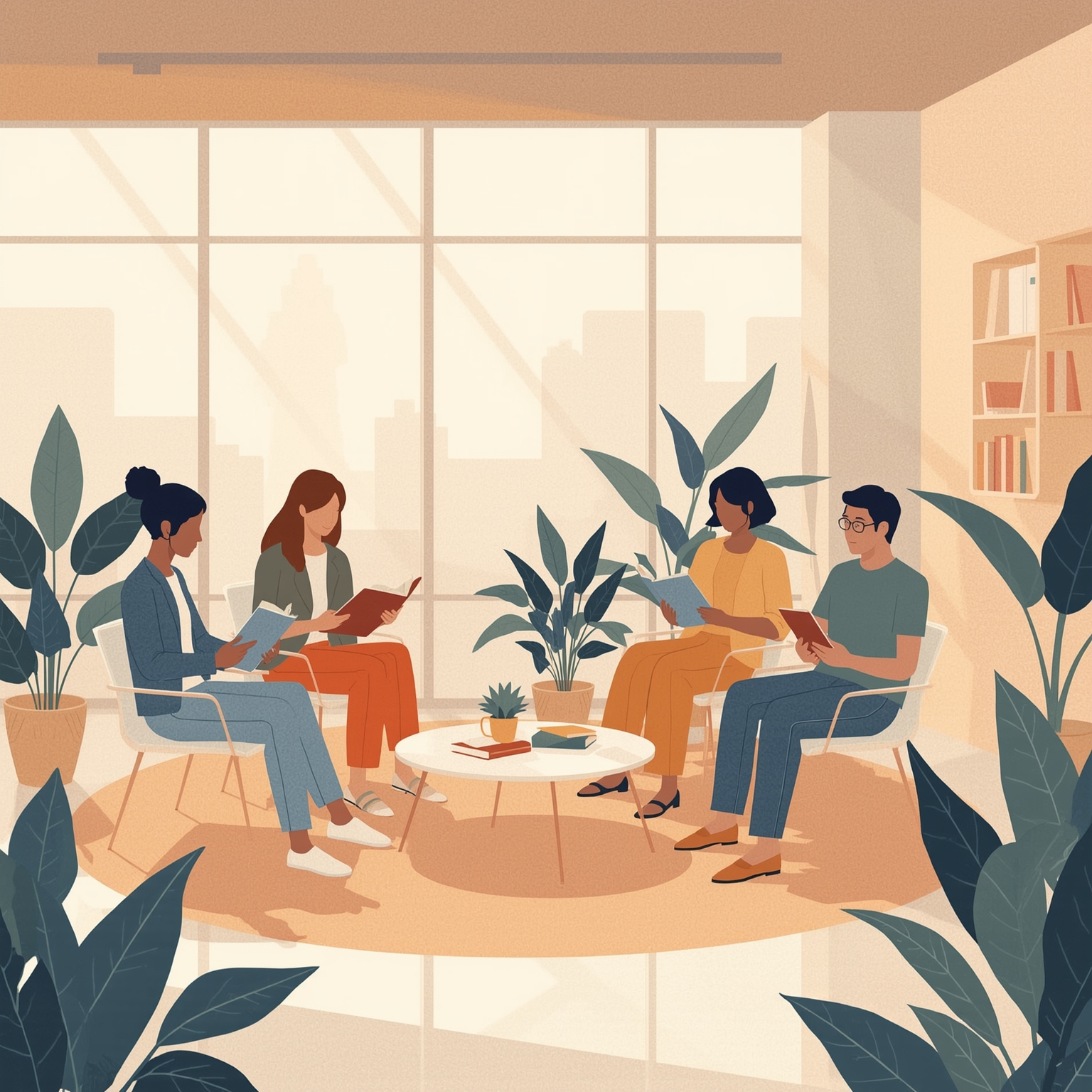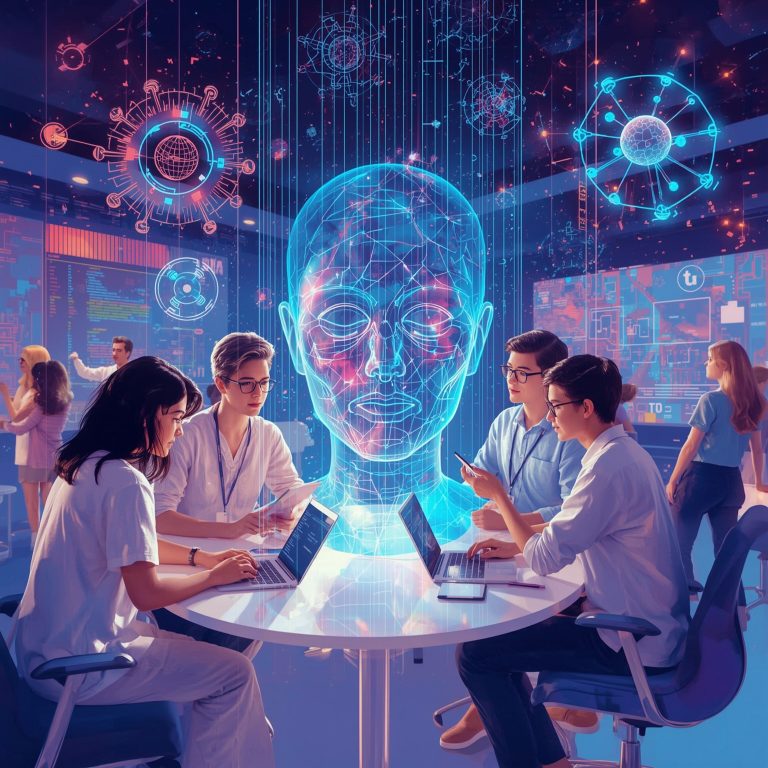Only a year earlier, Traedana Odom had found little joy in venturing beyond the quiet confines of her home. Burdened by the heavy weight of depression and residing more than an hour’s drive from her closest family members, she rarely felt the impulse to socialize or explore the world outside her door. Her outings were limited to the essentials—brief excursions to her doctor’s appointments or an occasional movie, small attempts at distraction that never quite lifted the immovable fog of isolation. Then, in a moment of both timing and trust, her physician proposed an unexpected kind of remedy: participation in something known as the Art Pharmacy.
This newly established organization sought to fill a void that traditional medicine had long struggled with. Rather than prescribing pills or exercise regimens alone, it forges bridges between healthcare institutions and community-based programs, weaving together the arts and wellness into a single network of care. For Odom, her first prescribed “dose” came in the form of a stage play, the beginning of a series of experiences designed not to cure through chemistry but to restore through community. Over time, she joined a monthly paint‑and‑sip workshop, gradually finding herself laughing among strangers who soon felt like companions. “They’ve got me opening up,” she said, marveling at her own transformation. Once wary of new friendships, she now speaks of making a friend at one of the events and notes a visible lightness in her mood—a tangible easing of her previously deep depression.
For decades, physicians have issued familiar directives promoting a healthy life: exercise regularly, eat balanced meals, rest well. Although many ask their patients about sadness, anxiety, or feelings of isolation, few possess the tools to do more than listen sympathetically. Structural barriers and scarcity of time limit their ability to guide people toward authentic social engagement or consistent exercise programs—even though both have proven to elevate mood and overall health.
Now, a rising movement known as social prescribing aims to fill precisely that gap. In this model, doctors refer patients not only to specialists or medications but to participatory programs—knitting circles, community dance classes, walking groups, even art workshops—that align with an individual’s interests and therapeutic needs. Since its creation in 2022, Georgia‑based Art Pharmacy has rapidly expanded to nine states, offering approximately 35,000 artistic and social experiences over a six‑week rotation, its founder Chris Appleton explained. In a time when technology often deepens isolation rather than connection, such initiatives remind us that human well‑being can take root in uncomplicated yet profound acts: conversation, creativity, and shared laughter. In other words, maybe what the doctor now orders is not medication but membership in a local book club.
Appleton attributes the fast growth of this practice to the intertwined crises of mental health decline and widespread loneliness—conditions magnified and made painfully visible by the isolation of the pandemic years. In 2023, then‑U.S. Surgeon General Vivek Murthy declared loneliness a public health epidemic. The situation is compounded by a severe shortage of mental‑health professionals. Data from health research firm KFF reveal that only about one‑quarter of Americans in need currently receive appropriate mental‑health services; meeting demand would require more than six thousand additional practitioners nationwide. Such scarcity makes alternative approaches like social prescribing appealing and perhaps necessary complements to traditional care.
The United Kingdom offers a compelling preview of what the United States might achieve. The practice has been integrated in Britain’s healthcare landscape for decades. In 2023 alone, an estimated 1.3 million Britons received social prescriptions, according to University College London researchers. Supporting this system are more than 3,000 so‑called “link workers,” individuals who function as intermediaries between physician and patient, helping tailor social and creative activities to each person’s temperament, lifestyle, and comfort level. Often, their role resembles that of social workers or community organizers—listening carefully, guiding gently, and connecting purposefully.
In North America, the concept remains in its infancy but is steadily gaining traction. The Montreal Symphony Orchestra recently began honoring doctor‑issued prescriptions by offering patients free concert tickets, embracing the idea that exposure to beauty can itself be curative. In Los Angeles, nonprofit organizations host movement classes for individuals living with neurodegenerative conditions such as Parkinson’s and Alzheimer’s, drawing upon rhythm and physical expression as therapeutic tools. Stanford University entered the conversation in 2023 by partnering with Art Pharmacy to provide its students with structured access to poetry readings, museum visits, and creative workshops—helping young adults find community in artistic exploration.
Despite these promising beginnings, access remains uneven. Social Prescribing USA, formed in 2022 to lay the groundwork for a national framework, is methodically documenting programs across the country. Early maps show strong concentrations of such initiatives in coastal urban centers—from gardening cooperatives to trail‑walking groups and theater performances—but great expanses of rural America have yet to participate. Changing the culture of healthcare itself is a slow process, requiring practitioners to view loneliness and social deprivation not as side effects of illness but as central conditions deserving their own forms of treatment.
Still, the promise is vast. According to Alan Siegel, a family physician and executive director of Social Prescribing USA, these activities are remarkably low‑risk yet potentially high in benefit. At present, the focus remains on populations at heightened risk—individuals living with chronic disease, older adults, and those experiencing acute social isolation—but the ultimate goal is system‑wide adoption, embedding this philosophy into the health system’s foundational principles. Yet as Siegel notes, what feels therapeutic to one person—say, a tranquil hike through nature—could feel like distressing solitude to another. Success requires personalization, and much of the process still depends on experimentation. Art Pharmacy assesses each participant after every activity, employing standardized metrics like the UCLA Loneliness Scale, the World Health Organization’s Five Well‑Being Index, and specific goal‑tracking surveys addressing depression and anxiety.
Empirical evidence in favor of the approach continues to accumulate. A 2024 study by the Canadian Institute for Social Prescribing linked participation with reduced hospital admissions, decreased mental‑health‑related doctor visits among adolescents, greater employment rates, and lower incidence of heart disease and stroke—projecting a societal return of $4.43 for every dollar invested. Similarly, research from the United Kingdom on horticultural and craft programs found economic returns between £3.30 and £4.70 per pound spent. Recognizing the urgency of social disconnection, the World Health Organization established a Commission on Social Connection in 2023 to elevate loneliness to the level of a global health priority. While preliminary findings affirm the potential of social prescribing, evaluators acknowledge that program heterogeneity and limited sample sizes make universal conclusions elusive for now.
As this human‑centered movement grows steadily but silently, it stands in stark contrast to another, far louder response to loneliness—the promise of artificial companionship through technology. Enthusiasts like Avi Schiffmann, creator of the so‑called AI friend necklace, propose that people genuinely desire hardware that listens, records, and converses as both confidant and therapist. Tech giants echo this optimism: Meta envisions customized chatbot personas as the next evolution of digital friendship, while upcoming versions of OpenAI’s ChatGPT even move toward generating intimate or romantic simulations. Across the digital landscape, individuals now nurture relationships with AI pets, virtual girlfriends, and algorithmic counselors—entities that flatter, soothe, and engage endlessly, while serving as commercial products engineered to keep users dependent and providers profitable. These interactions, though novel, remain largely anecdotal, lacking the scientific scrutiny that undergirds real therapeutic practice.
As Meta’s founder Mark Zuckerberg admitted earlier this year, nothing truly rivals physical connection, yet modern existence leaves many people starved for it. Importantly, the design intent behind these technological companions is not to ease their users back into real social life but to replace aspects of it altogether. Social prescribing, by contrast, begins from a different premise: that recovery from loneliness or depression depends upon genuine, sustained participation in human communities. It aims to accompany an individual through a challenging period with the goal of lasting reintegration rather than indefinite substitution.
Kate Mulligan, scientific director of the Canadian Institute for Social Prescribing, warns that the language of “loneliness” risks oversimplifying what is in fact a collective, societal fracture. Artificial friends, she argues, do nothing to repair the profound erosion of trust, polarization, and civic belonging that underlies modern isolation. Two sharply divergent paths are coming into focus—one seeking solace in code, the other rebuilding it through community. A possible intermediary direction may yet emerge, where artificial intelligence becomes a supportive tool rather than a surrogate companion. Used wisely, AI could analyze data from clinics to identify those most in need of social programs, coordinate local resources, or help understaffed centers keep track of outcomes. As Mulligan concludes, the technology has immense potential for supporting care, but the one function it cannot fulfill is the one we most require: the irreplaceable presence of another human being.
Sourse: https://www.businessinsider.com/doctors-prescribing-socializing-loneliness-crisis-medical-solution-2025-11



